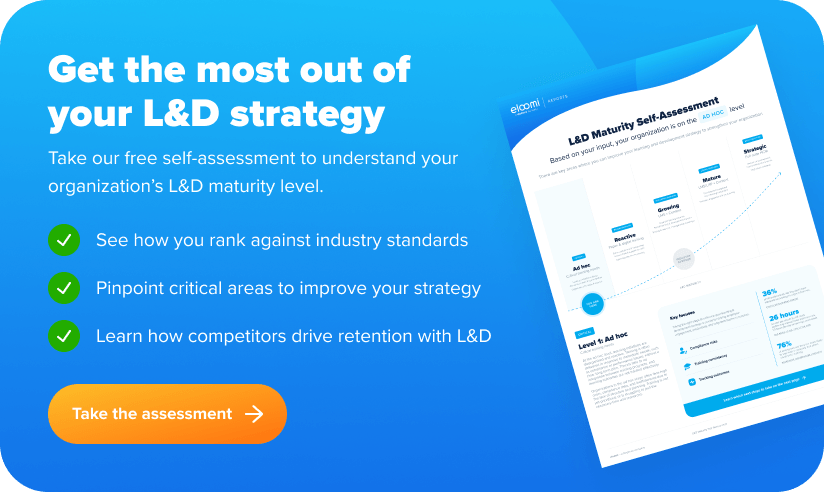Proper onboarding keeps a new employee engaged and it has huge benefits for your operations efficiency. In order to offer candidates an exceptional experience, HR departments need to be prepared to overcome different challenges when onboarding both remote and office-based employees.
Why employee onboarding is significant
Talent scarcity and high turnover are among the biggest challenges that organizations have encountered in recent years, so it is critical to engage and retain employees from the beginning ensuring an impeccable onboarding process. A streamlined and effective onboarding process empowers employees to become acquainted with the requirements of their new function and the company as quickly as possible. The most significant way onboarding procedures improve performance and productivity is by assisting new recruits in getting to work sooner. In fact, it not only allows you to get employees productive faster, but it also allows you to retain them for a longer period through a culture of mentorship and fostered growth.
Let’s look at some data; the Aberdeen Group found that 83% of best-in-class organizations begin the onboarding process before the new hire’s first day. This is most likely because an employee’s attitude and retention with your organization depends on their first 90 days of employment. Employee onboarding determines if the hiring process is complete or if it must be restarted in a few months. According to a Jobvite survey, 20% of employee turnover occurs within the first 45 days of employment, and it frequently occurs as a result of the new hire’s unsuccessful onboarding. Studies have also shown that 69% of employees are more likely to stay with an organization for three years if they had a positive onboarding experience.
In this article, we’ll show you how effective onboarding achieves goals such as orienting employees to their new role, the company’s values, and what the organization has to offer.

Office-based onboarding checklist
When a company culture is based on great knowledge sharing and social learning, the workforce will be naturally involved from the beginning with new colleagues. This is a crucial step to create an excellent start for employees during the onboarding process and support them in making a new meaningful network at work. But how can you ensure that every new member of your team gets off to a flying start in the office? The answer is with a comprehensive employee onboarding checklist, and here you have a checklist for office-based employees:
- Guided Tour of the Office – Begin the journey with a comprehensive office tour. It’s an excellent way to help new team members familiarize themselves with their surroundings and feel more at ease. Remember, the objective of an onboarding checklist is not just about formalities, but also about making them feel comfortable and welcome.
- Workspace Personalization and Setup – Next, assist your new employee in setting up their workspace. Setting up the new employees’ physical desks is crucial to equip them with the right tools and resources to perform their tasks efficiently.
- Completion of HR Paperwork – Ensure that new hires complete all HR documents promptly. This administrative part of the onboarding checklist for new employees helps set the employment relationship on a solid legal and formal footing.
- Introduction to Leaders and Executives – Arrange for new hires to meet their managers and company executives. This interaction can provide them with strategic insights about their role and the company’s direction, thereby enhancing their sense of belonging and purpose.
- Assign Essential Training – Don’t forget to assign relevant training materials as part of the onboarding checklist. These can equip them with the necessary skills and knowledge to excel in their roles.
- Introduction to the Company Culture – Make sure to discuss the company culture. Understanding the organization’s values, ethos, and working style will help new employees to adapt more swiftly and contribute positively. Include this as one of the key items in your employee onboarding checklist.
- Mentorship and Buddy System Assignment – Finally, it’s a great idea to assign a mentor or buddy as part of your onboarding process. This person can offer valuable guidance, answer any queries, and provide moral support, significantly enhancing the experience for your new hires. With such a comprehensive approach, you’re setting the stage for a smooth, quick, and efficient integration of every new team member into your workspace.

Digital remote onboarding checklist
Even if working from home wasn’t really a new experience for many people (especially freelancers and researchers), various trends and events forced companies to make radical changes in their procedures and future strategies.
Let’s be frank, remote work brings many challenges and doubts – but it adds true flexibility and creates exciting job opportunities for professionals around the world. Moreover, because most white-collar employees have experienced the benefits of remote work and expect to keep this possibility, a successful digital remote onboarding becomes a critical parameter to attract and retain talent.
This remote employee onboarding checklist will guide you through assembling an effective remote onboarding process for team members, highlighting some of the most crucial elements to build:
- Send a welcome package and equipment prior to the start date – Remote workers benefit from being home with all comforts but miss the perks of being at the office. Therefore work equipment should be sent before day one. It’s a good idea to discuss the equipment expectations with your new remote hires and ask them about their home office, for example are they able to work in a quiet environment? This conversation can help you understand if your remote employee has preferred hours for having meetings and a desire for asynchronous communication.
Don’t forget to provide them with some company-brand items to add a bit of the office while working remotely. - Intro to the teams and set knowledge – Set an online introduction to the organization including departments, teams, and key people your new hire can reach out to over the coming days.
One of the best ideas for onboarding remote employees successfully is to allow them to take part in various discussions to improve their sense of belonging, so inviting them to meetings with other teams is recommended. Hearing different points of view and learning about other departments’ objectives can easily increase motivation. - Create a virtual buddy program – Matching your new hire with a colleague offers a win-win situation in terms of development. The chosen person doesn’t necessarily have to be a veteran, just someone who will have enough time to dedicate with suitable knowledge to share and a good level of empathy. It can actually be an advantage to choose someone who joined the company not too long ago.
- Provide interactive learning experiences – Who said that training courses are monotonous? You can inspire your new remote employees with different training styles such as microlearning, video learning, blended learning, quizzes and surveys, as well as adding gamification! Explore the eloomi learning content library to get inspired.
- Share timelines to discuss expectations – Begin a conversation with new hires about future projects and tasks, talk about the business strategy and career development, and set goals as soon as possible. It’s vital not to overwhelm new employees with too much information, but it’s also worthwhile offering them an overview to see what will come next and align with the rest of the team.
- Request feedback on the onboarding experience – If you are not sure about the process and would like to improve it, ask your new hires to share their feedback right away. Maybe you’ll find some things that are not useful and others that are missing. Life is a work in progress, and the same applies to your company remote onboarding.
Onboarding remote employees requires a flawless plan to optimize time with a balance between information and socialization. Don’t overload your new hires with excessive knowledge, but instead ensure that company rules and values are well understood during the initial part of the journey.

Onboarding made easy with eloomi
When meticulously planned and executed, an onboarding checklist for new employees can be transformative for your organization whether it’s for remote or office-based employees.
As HR professionals and hiring managers, you’re tasked with ensuring that each new hire’s transition into your organization is seamless. Deepening your knowledge about common onboarding missteps and effective phases can greatly support your goal for a smooth integration process.
If you’re looking for long-term solutions to scale your onboarding efforts, get in touch for a free LMS demo today and explore how eloomi learning solutions can help you hit growth goals while supporting each new hire along the way.






